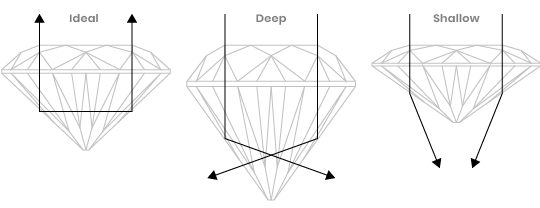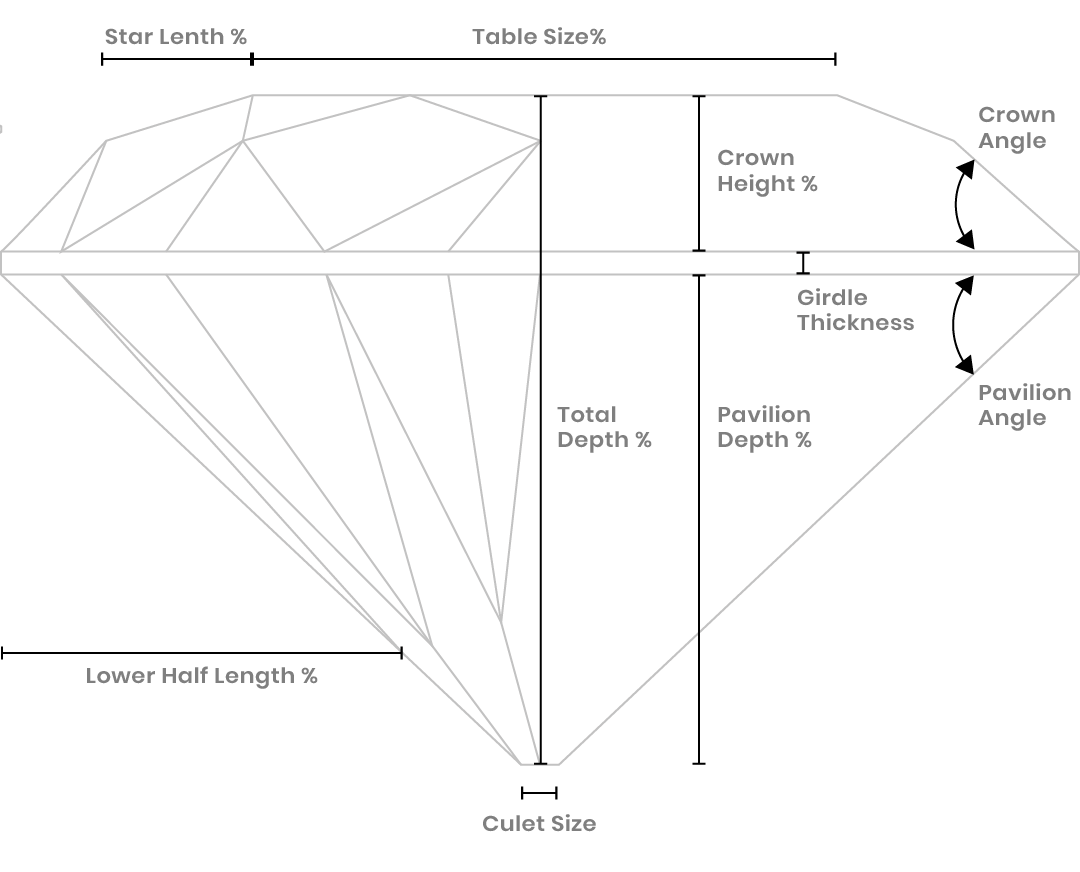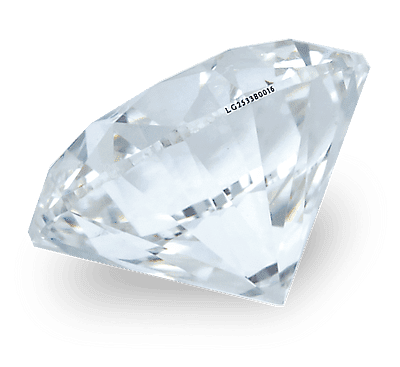
Ever & Ever Collection
Shop Our Ever&Ever® Collection
Ever & Ever is a thoughtfully curated, customizable bridal collection that inspires brides to create the ring of their dreams. Talented, passionate designers carefully curate each original ever&ever® design, then they turn the creative process over to you. You customize the stone shape, size, and metal quality bringing to life your bridal vision. Browse our extensive collection of styles to find the ring that speaks to you.
The Truth About Diamonds
Diamond Anatomy &
Cut Quality
Graders evaluate round brilliant diamond cuts based on how closely the stone comes to having ideal proportions and, thus, showing maximum brilliance and fire. These proportions depend on the table size, the crown angle, girdle thickness, pavilion angle, culet, and many other factors. These individual factors can receive cut grades, too.


Understanding the 4 C’s of Diamonds
Clarity
A diamond’s clarity grade evaluates how clean a diamond is from both inclusions and blemishes. Note that each diamond differs slightly. Rather than sticking to a particular grade on the diamond clarity chart, review each diamond to see if you notice imperfections.


Cut
The ‘Cut’ is perhaps the most important aspect of a diamond quality that impacts a diamond’s beauty. Diamond cut specifically refers to the quality of a diamond’s angles, proportions, symmetrical facets, brilliance, fire, scintillation and finishing details. These factors directly impact a diamond’s ability to sparkle, along with its overall aesthetic appeal.


Color
Diamond color is graded in terms of how white or colorless a diamond is. The GIA grades diamonds from D to Z, with D being the most colorless, and Z containing noticeable brown or yellow tint. The diamond color chart below shows how each grade looks next to each other.


Carat (Size)
Often when people hear the term “carat weight,” they think it refers to the size of the diamond. In actuality, Carat refers to the weight of the diamond, not how large the stone is. A 1 carat diamond equals 200 milligrams, or 0.2 grams—and weighs about the same as a quarter of a raisin. Depending on the diamond shape and how it is cut, two 1 carat diamonds might be quite different in size.


Lab-Grown Diamonds
What are Lab-Grown Diamonds?
Lab-Grown Diamonds are optically, chemically, and physically, identical to natural diamonds and are created in a lab by scientists. Lab-grown diamonds provide the same luxurious diamond at flexible price points to fit anyone’s lifestyle. Lab-grown diamonds also offer the opportunity of a larger carat weight at lower costs.

Optically
Indistinguishable from the naked eye, lab-grown diamonds present the same visible qualities as their natural counterparts.

Chemically
Lab-grown diamonds are not simulants. They are formed from rough crystals taking an average of 2–4 weeks.

Physically
To confidently tell lab-grown and natural diamonds apart, advanced instruments are needed to detect the physical aspects.
What is the Difference Between Lab-Grown and Natural Diamonds?
| Diamond | Natural | Lab-Grown |
| Chemical Composition | Carbon | Carbon |
| Crystal Shape | Octahedron | Cuboctahedron/Cube |
| Refractive Index | 2.42 | 2.42 |
| Dispersion | 0.044 | 0.044 |
| Hardness | 10 | 10 |
| Density | 3.52 | 3.52 |
| Inclusions/Blemishes | Yes | Yes |
How are Lab-Grown Diamonds Created?
Lab-grown diamond manufacturers operate in highly controlled lab environments using one of two methods: High Pressure High Temperature (HPHT) or Chemical Vapor Deposition (CVD).
Both processes begin with a diamond seed and result in a Lab-Grown Diamond. During the HPHT method, the scientist places the diamond seed in a growth chamber (apparatus), heats it to 2,700–3,100 degrees Fahrenheit, and exposes the seed to a pressure of 725,000 pounds per square inch, similar to the process that takes place in Earth’s mantle. The diamond seed remains under these intense conditions for varying lengths of time.
The CVD method of Lab-Grown Diamond creation begins with flat diamond slabs placed in a reactor. The reactor is injected with Methane gas. The gas is exposed to microwaves which cause it to break down into its comprising atoms and generate a carbon-rich plasma cloud. The carbon atoms in the plasma connect with the diamond slabs and create new layers, resulting in slow vertical growth.
Both the HPHT process and the CVD process produce Type IIa colorless Lab-Grown Diamonds, equal to some of the rare and sought-after types of Natural Diamond. These processes can also be adjusted to produce colored Lab-Grown Diamonds.
